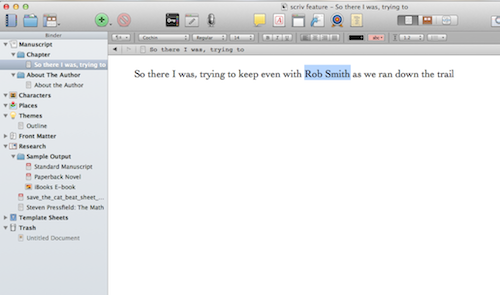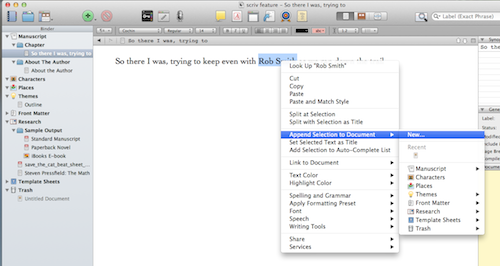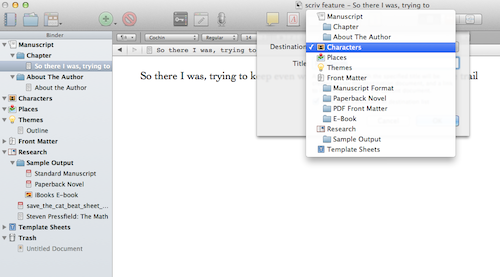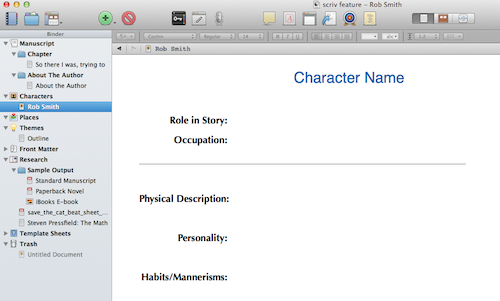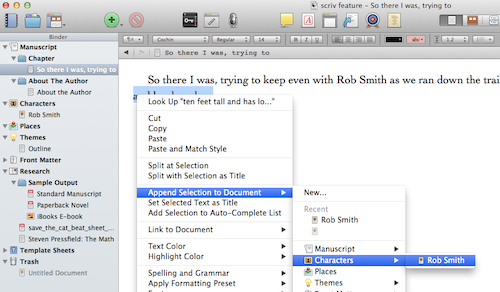You can find tons of tips and tricks for how different writers use Scrivener in different ways. The best thing about this application is that it’s so darn versatile. I have no idea how Keith Blount made it so damn powerful. Yes, there is a learning curve. It is completely worth it, however.
One of the things I’ve found incredibly valuable are the Labels and Statuses. Lots of people have lots of theories on how to use these, and to be fair, you can use them for anything, in just about any way.
Here’s how they come in the basic Scrivener project set up. The Labels menu entries have colors and tell you what type of document this is:
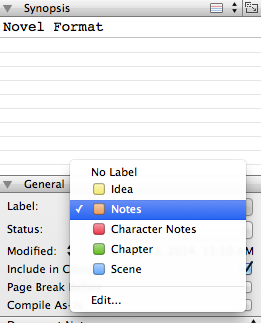
The Status menu tells you where you are with this document (To Do, First Draft, Done, whatever):

In the Scrivener template I’ve created, I’ve changed these. The Labels menu has colors, and for me colors indicate what stage something is at: beginning, middle, finished, or CRISIS!!!, so my Labels menu looks like this:
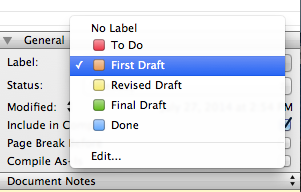
Everything usually gets set to First Draft until I finish a first pass through the novel and discover that half of the scenes I’ve written are missing some incredibly important information or whatever. Then I mark those scenes as To Do. I go through everything again and try to get them to Revised, at which point it goes off to the Editor.
One way to use the colorful edge of the Labels menu is by setting “Use label color in Binder”:
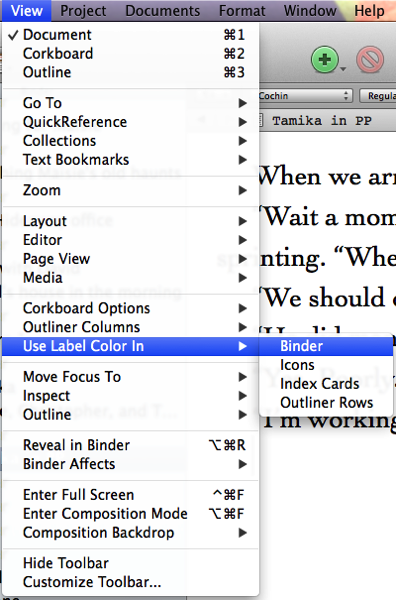
Which then allows me to see how every file in my document is doing:

I can immediately see what documents are RED (meaning, probably not even coherent) or ORANGE (I did one pass, need to take another look) or GREEN (nearly perfect…or at least you can skip dealing with this for now). Sadly, I’m not even close to Green in my current draft. Sniff.
I can also (with just about any meta-data Scrivener lets you set up) create a Binder Collection of all the documents marked “To Do,” so I can just look at those. But Binder Collections are beyond the scope of this blog entry.
Since I moved the current state of the document into the Labels menu, I freed up the Status menu to really help me arrange things.
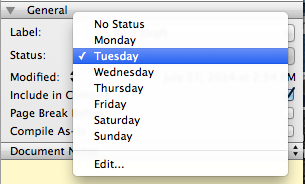
Because I have to know what day various things take place on. I continually check the Outliner mode to see that everything is happening on the day it’s supposed to:
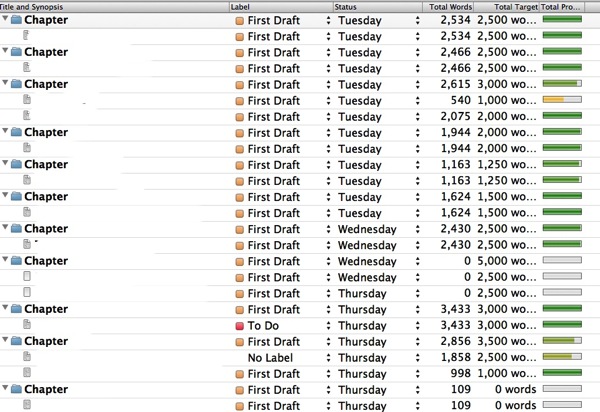
In Everybody Takes The Money, one important scene had to take place on a Sunday. So I started figuring backwards to see what events happened on which days and whether I was bunching too much stuff up on any one particular day. (In one draft of ETTM, Drusilla drove to the San Fernando Valley three times in one day, which…no. That got changed.) Seeing the time laid out like this makes me ask: Has enough time gone by for such-and-so to have happened?
Even if I never mention what day of the week it is in the story, I am very aware of what day it’s supposed to be.
One time editor pointed out to me that something happened on a Monday and the effects were already felt by the next day, which she felt was impossible. I actually was aware of that exact story compression because of the Outliner and told her the reasoning behind it. Which made me put a few things in the story to hammer home WHY it was strange but not impossible for these events to have followed upon one another so fast.
I don’t know how other writers use their Label/Status menus, but this is how I use mine for mysteries!
